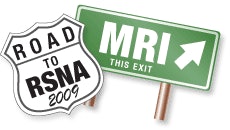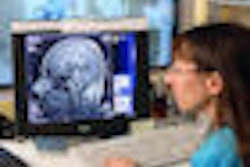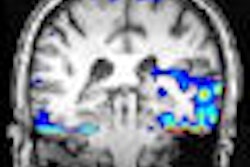At RSNA 2009, MRI once again will cut a wide path across the scientific specialties, showing its diversity by contributing to the detection of maladies such as autism and Alzheimer's disease and lending a complementary hand in molecular imaging.
"This year there is a significant improvement of the abstracts, particularly in imaging techniques, and a significant number of studies that deal with functional imaging of the brain," said Dr. Mauricio Castillo, chair of RSNA's neurology and head and neck subcommittee. "This not only reflects the U.S., but the quality of material submitted all over the world, with 75% to 80% of abstracts coming from outside the U.S. The quality of research in other countries also has improved."
Among the highlights are papers on functional MRI (fMRI). Castillo, chief of neuroradiology at the University of North Carolina in Chapel Hill, highlighted one fMRI study on stuttering that suggests the condition may not be entirely psychological. "I think this is the first time that someone has demonstrated that there is anatomical basis for stuttering and that it is not a purely psychiatric problem," he added.
Another fMRI study from the University of Utah details a method of blood oxygen level-dependent (BOLD) fMRI analysis with the potential to identify in vivo abnormalities of regional brain connectivity that underlie the expression of autism.

The tide of MRI also may be shifting from basic diagnoses to playing a more prominent role in how medications affect patient therapy.
"Radiologists are becoming an active part of the evaluation of medications and how they are working functionally, whereas we weren't as much of a functional kind of specialty as we are now, with our collaborations with researchers who are developing drugs and new treatments for patients who have systemic diseases," said Dr. Michelle Barr, chair of the musculoskeletal subcommittee.
Barr, who is chief of interventional musculoskeletal radiology at the University of Virginia in Charlottesville, noted that many major academic centers are developing research arms in which radiologists are contributing to molecular imaging, with increasing collaboration between clinicians, scientists, and physicists.
"We are seeing a lot more papers evaluating different ways medication can affect the metabolism in muscles or how medications can prevent nerves from picking up certain toxic molecules," Barr said. "We are not just diagnosis now, we are helping to evaluate therapies to see how they are actually working."
Below are highlights of many novel MRI scientific papers scheduled for presentation at this year's RSNA meeting. And to view the RSNA's scientific program directly, just visit the conference's Web site by clicking here.


.fFmgij6Hin.png?auto=compress%2Cformat&fit=crop&h=100&q=70&w=100)





.fFmgij6Hin.png?auto=compress%2Cformat&fit=crop&h=167&q=70&w=250)











